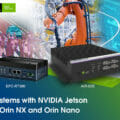High-performance computing (HPC) is transforming automotive manufacturing according to a new report from technology consultancy ebb3. The technology company looked at the impact of HPC with Aston Martin Lagonda and found that it increased workflow efficiency by 30%.
The report examined the benefits of rolling out HPC at Aston Martin. Integrating an updated HPC environment with a GPU-accelerated virtual desktop infrastructure improved speed and efficiency to enable the powertrain, aerodynamics, and body structures teams to work remotely and collaborate within a secure environment.
Lea Renaux, HPC solution lead at Aston Martin Lagonda, said: “The new HPC environment delivered by ebb3 is meeting all of our requirements and is enabling the CAE teams to lead and innovate the design of our ultra-luxury models, supporting a 30% increase in workflow efficiency. We were looking for a solution that would improve the user experience drastically by providing a highly available, scalable and reliable system as well as burst capacity and proactive support.
“Thanks to our successful work with ebb3, we are now able to provide class-leading support as well as new cutting edge technologies to the CAE engineering teams in powertrain, aerodynamics and body structures departments.”
CAE is the use of computer software to simulate performance and is used to validate and improve product designs or assist in resolving engineering problems. A typical CAE process comprises pre-processing, solving, and post-processing steps.
During the pre-processing phase, engineers model the geometry (or representation) and the physical properties of the design from CAD models, as well as the environment in the form of applied loads or constraints. Next, the model is solved using an appropriate mathematical formulation of the underlying physics. The results of the solve are then presented to the engineer for review, which may result in further design changes to the CAD models. This iterative design process is carried out multiple times before manufacturing any physical components.
With the growth in hybrid, electric, autonomous, and fully connected vehicles, the role of HPC within an automotive manufacturer is changing. The development of Advanced Driver-Assistance Systems (ADAS) relies heavily on simulation to test rare situations that are unlikely to happen predictably in the real world. As vehicles become more connected, real-world data can then be fed into these simulations, effectively creating a digital twin to further improve fidelity, making ADAS technologies safer and more reliable.
Chris Brassington, CEO of ebb3, said: “The greater flexibility of HPC platforms will allow automotive manufacturers to explore the benefits of cloud computing. Where hyperconnectivity will enable devices, data and systems to talk constantly, enabling the use of digital twins, which allow the digital simulation of production facilities.
“The use of digital twins will radically shorten the amount of time it takes to develop a new model while also creating safer, more efficient vehicles.”
ebb3 has a wealth of experience that spans automotive and motorsport, government and education, retail and logistics, construction and manufacturing, media, research and healthcare, architecture and engineering. Indeed, whatever your industry, we are here to help you embrace digital transformation.








